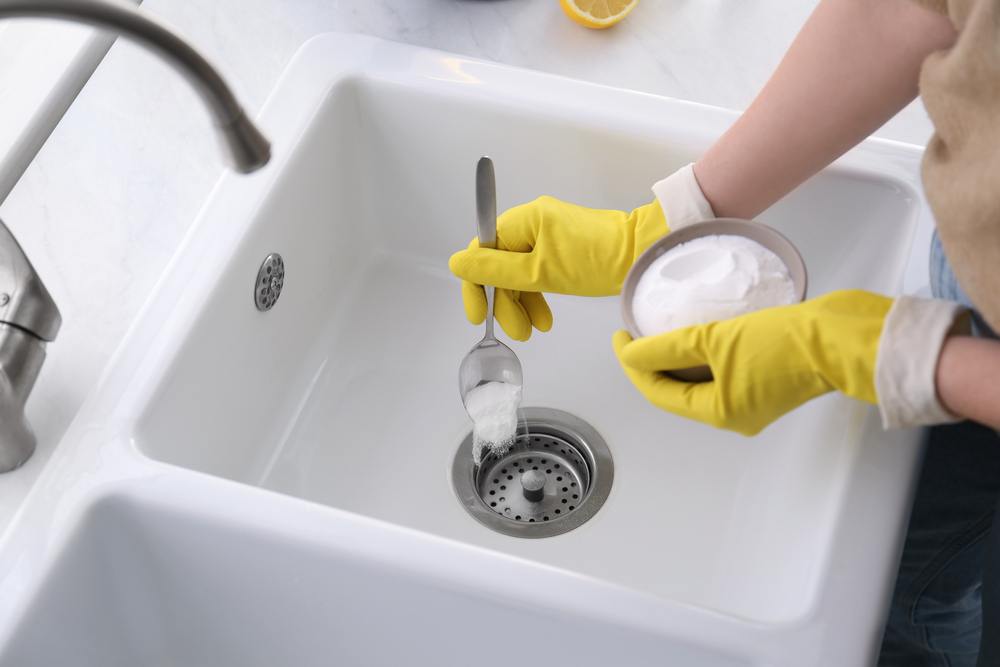
10 Nov. 23
Why Is My Sink Not Draining? Common Causes & Solutions
Sink not draining? It’s one of the most common household plumbing problems that property owners face. It can be quite an inconvenience and drain on your patience as well. But don’t fret, because there’s also some good news about this common problem – and that bit of good news is that it’s one of the easier plumbing issues to troubleshoot and resolve on your own.
So, if your sink isn’t adequately draining, don’t panic! Instead, take the time to diagnose the likely cause and implement the best solution. Read on as we discuss the common causes of a clogged sink and the solutions to get it draining again.
The Usual Suspects: Common Causes of a Clogged Sink
If your sink is slow to drain or won’t drain at all, it’s often due to an obstruction in the pipes. And if you’re wondering how blockages form in the piping, just think about everything that has the potential to enter the system based on the room the sink is in. For instance, soap scum, toothpaste, and hair are likely to go down the drain in the bathroom. And in the kitchen, food debris and grease can obstruct pipes. As these obstructions accumulate over time, pipes become clogged, and water has difficulty draining.
Another common cause of a clogged sink is a damaged or ill-fitting sink strainer. Sink strainers are often installed on kitchen sinks or shower drains and are designed to capture food debris, hair, and other objects while allowing water to pass freely down the drain. If these components don’t fit right or are damaged, they’re not going to work properly. In the event that a sink strainer contributes to a clogged sink, you’ll not only need to address the blockage in the pipes but replace the strainer as well.
The Solution: How to Get Your Sink Draining Again
So, how do you get your sink to drain properly again? The good news is that there are a number of things you can try to clear the obstruction yourself. Here’s a look:
1. Plunger Power
Plungers aren’t just for toilets, though you likely won’t be able to use the plunger that you use on your toilet on the sink. We suggest picking up a mini sink plunger that will adequately fit over the drain opening. When a seal is formed over the drain opening, the pressure of the water may be enough to remove obstructions in the drain pipes.
To use a plunger to clear a blockage, follow these steps:
- Fill the sink about halfway with hot water.
- Place the plunger over the drain opening.
- Pump the plunger up and down over the drain opening to create suction and place pressure on the blockage.
- Repeat until the water drains freely.
2. Boiling Water
Ideal for clearing grease or oil buildup, boiling water can help break down blockages and clear pipes. What’s more, all you need is a pot and your stove to implement this solution. Simply fill a pot with water and heat it on the stove until it begins to boil. Once boiling, slowly pour the water down the drain. Repeat as necessary until the sink begins to drain freely again.
3. Baking Soda and Vinegar
Using natural cleaning solutions like baking soda and vinegar is an ideal way to clear obstructions. Here’s how to do it:
- Start by pouring a cup of baking soda down the drain.
- Next, pour a cup of vinegar down the drain.
- Let the mixture sit for 15 minutes in the drain. This is enough time to create a chemical reaction at the site of the blockage.
- After 15 minutes, flush the drain with hot water.
We should note that we strongly discourage using chemical drain cleaners to clear obstructions. While they may be successful in removing any blockages, many are known to also cause damage to the pipes over time. Stick to natural solutions for treating blockages and for regular cleaning purposes.
4. A Professional Plumber
If these DIY methods fail, then know you’re dealing with a particularly stubborn clog. And when you’re up against a stubborn clog, calling in a professional plumber is your best bet. A professional plumber will come equipped with the right tools, techniques, and know-how to get your sink back to normal.
How to Prevent Future Clogs
The best way to solve a clogged sink is to take preventative steps to make sure it doesn’t become obstructed in the first place. Here’s a look at some tips and tricks to ensure your sinks are always draining freely:
- Clear plates with large food scraps into the garbage before rinsing in the kitchen sink.
- In the kitchen, ensure the garbage disposal is in good working order so food debris is broken up into small enough scraps to safely travel through pipes and into the wastewater system. An easy way to sharpen and clean a garbage disposal is by grinding ice cubes in it.
- Don’t pour grease or oils down the drain. Instead, pour them into a cup or jar and discard it.
- Use a drain strainer in kitchen sinks to catch food debris and in bathrooms to catch hair and soap scum.
- Perform routine pipe cleaning using natural solutions, such as baking soda and vinegar or boiling water.
Dealing with a clogged sink is never fun, but in most cases, the issue can be easily resolved without having to call in a professional plumber. Clogged sinks can also be prevented with some routine maintenance. Take the time today to ensure your sinks are draining as they should and consider implementing the solutions mentioned in this post if they’re not.

